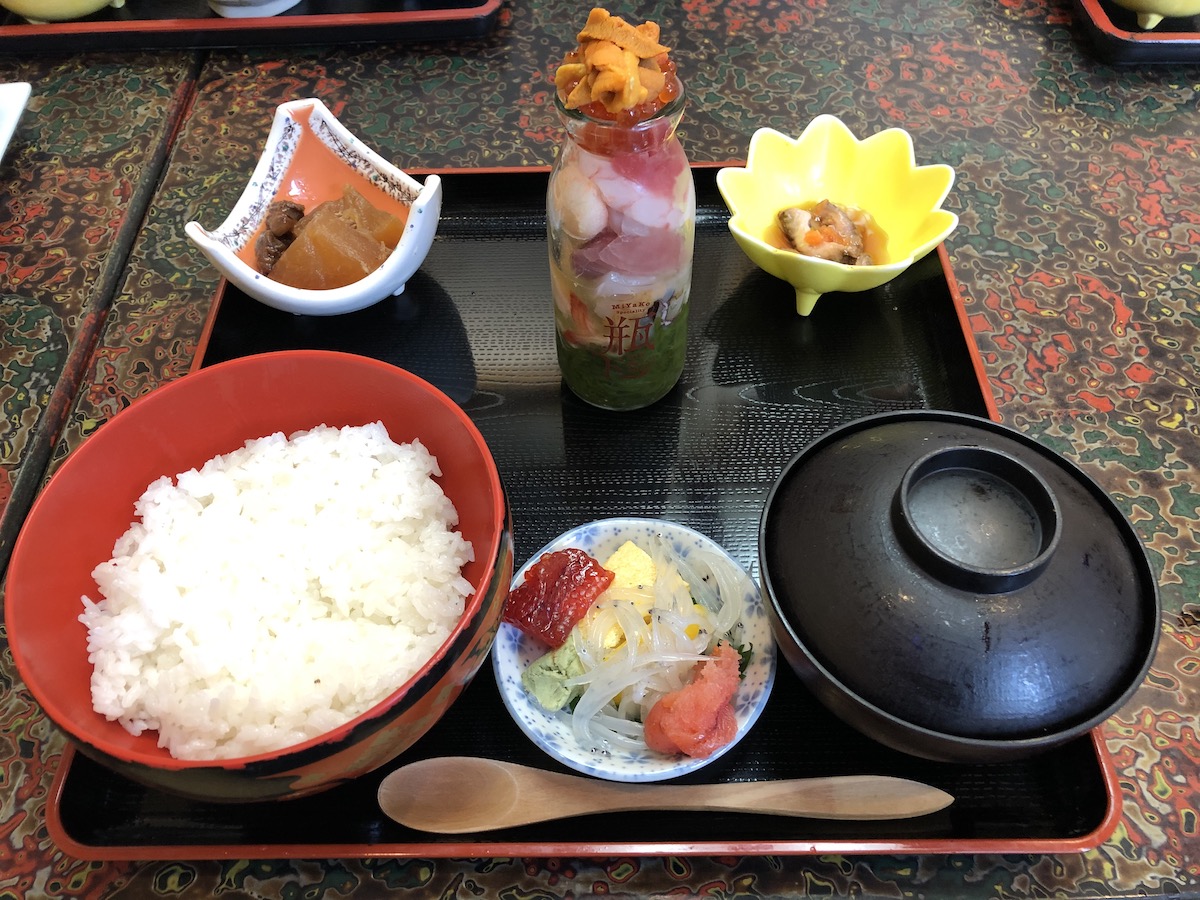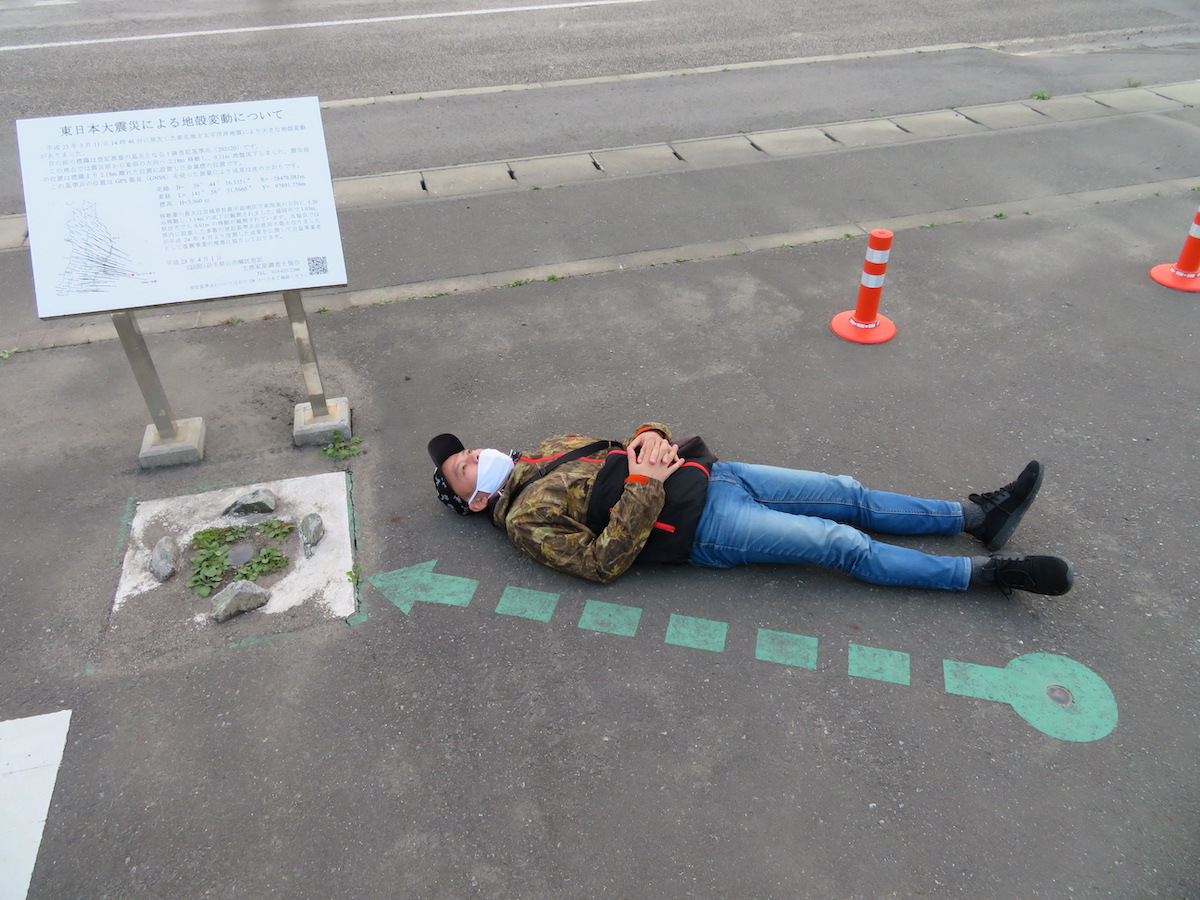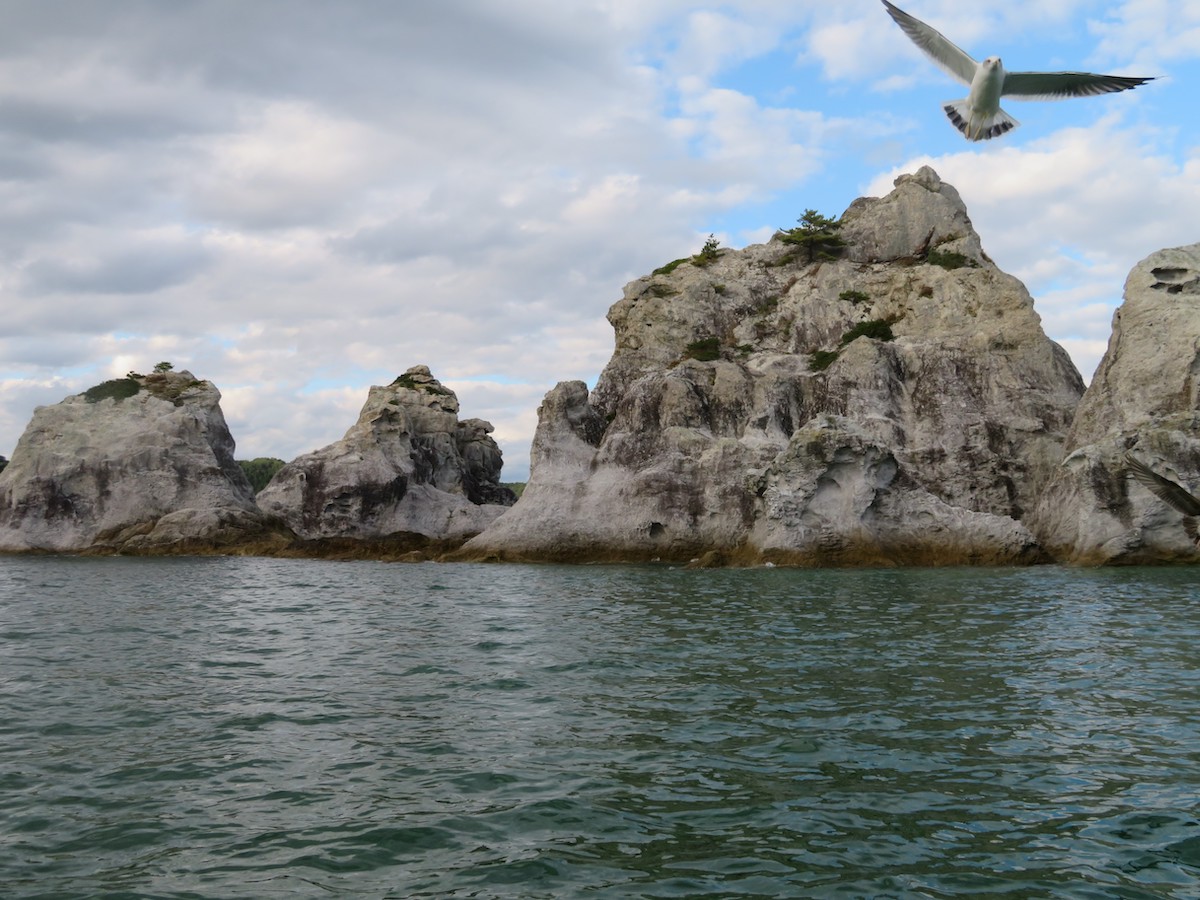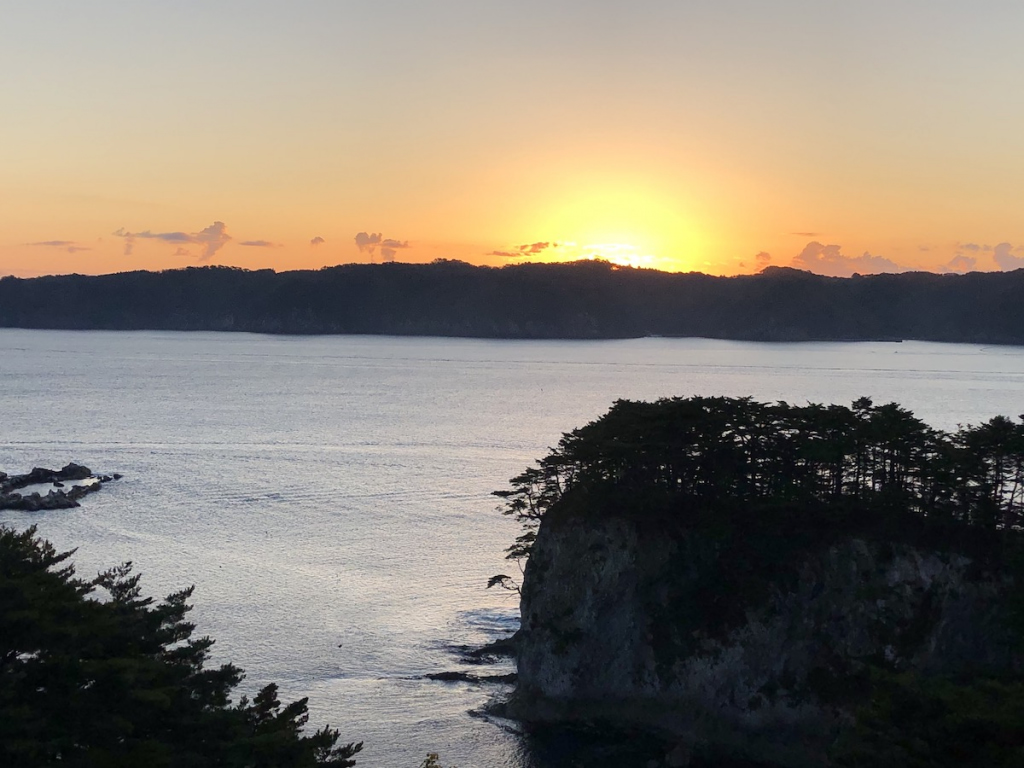Iwate, Japan’s second largest prefecture (after Hokkaido), was severely battered by the massive earthquake of March 11, 2011 and the tsunami that quickly followed. Fortunately, nature and humans are resilient. Iwate’s picturesque coastline has recovered well, even as the area’s inhabitants are also putting their lives back together. Visit for a chance to see spectacular scenery, but also learn about the disaster and the ongoing recovery.
The city of Miyako sits at about the center of Iwate’s Pacific Coastline and makes for an interesting and illuminating two or three-day excursion. It is accessible by hourly buses and less frequent trains from Morioka, so it requires about 4.5 hours to reach from Tokyo. A convenient option is to use the JR East Welcome Pass (available to non-Japanese passport holders irrespective of visa status) and get a discounted car rental from JR at either Morioka or Miyako to provide maximum flexibility.
If you arrive in Miyako close to lunchtime, head to Janome, near the train station, for a lunch of “bin-don,” a Miyako specialty. A “bin” is a glass milk bottle. “Don” is any kind of food served atop a large bowl of rice. “Bin-don” is a glass milk bottle filled with Miyako seafood that diners pour out onto a bowl of rice. The seafood is fresh and tasty; a filling and satisfying dish, perfect to keep going through an afternoon of sightseeing.

Next, head to Taro, a small fishing port town about fifteen kilometers north of the city. It takes about 30 minutes by bus from Miyako station, or 20-30 minutes by car. This town was badly damaged in the March 11 disaster and its new seawall is still under construction, but the town is in full recovery mode.
Not far from Taro Station is an attractive new Michi no Eki. Ordinarily, Michi no Eki are roadside rest stops for car travelers, with amenities and a shop selling local products. This Michi no Eki is also Taro’s main shopping center since all its shops were destroyed on that fateful day. It can be a good spot to extend a cheery konnichi-wa to Taro’s residents. On the highway that goes past, look for a sign showing the high water mark of the tsunami’s inundation.
The key spot to visit is the Earthquake Heritage Taro Kanko Hotel, a short walk from the Michi no Eki. Similar to Hiroshima’s famed Atomic Dome, this hotel building has been left standing as a reminder of its tragic history. The six-story building was badly damaged by the tsunami waters that rose 17 meters to its fourth floor just 45 minutes after the 9.0M earthquake. Although the lower three floors of the hotel were destroyed, the building’s structural integrity is intact, so it was decided to turn it into an awareness center and memorial.

In the hotel’s parking lot is a board showing how much the island of Honshu moved during five minutes of the initial earthquake and the subsequent 30 minutes of aftershocks. Here in Taro, the earth moved 2.13 meters. Embedded in the parking lot are two metal medallions with a green arrow painted to show the direction and extent of the shift, everything confirmed with GPS positioning.

This visual reminder of the impact of the earthquake is disturbing enough, but with prior arrangement, it is also possible to get a brief tour of what is left of the hotel, visual reminders of the power of the tsunami. Phone 080-5739-6423 to book a one hour (¥4,000) or two hour (¥10,000) tour in Japanese. The tour is in Japanese, so you’ll need to bring your own interpreter, if required.
If you need to decompress after the sobriety of the Taro Kanko Hotel, just a little further beyond, you will find soothing views of the coastline and the sea outside the mouth of the bay. It’s hard to imagine, even after the video shown as part of the tour of the hotel, what the tsunami’s water might have looked like from this vantage point.
Plan to stay overnight in Miyako, which has several choices of places to rest. If you’re in the mood to splurge, the Park Hotel Jodogahama is regarded as the finest hotel in Tohoku, perhaps because of its position on a hilltop with beautiful ocean views and Jodogahama Beach nearby. The hotel has spacious, comfortable Japanese-style rooms, indoor and outdoor Japanese baths, friendly staff, and excellent local food. The sunrise view is so good that the hotel even posts the time of sunrise in the lobby, so guests can set their alarm clocks to get up for it.
As a major port city, Miyako is especially known for its fresh fish. In the morning, the liveliest spot in town is the Miyako Fish Market, just a few minutes’ walk north of Miyako train station, teeming with the catch of the day.
A must-do activity in Miyako is a 20-minute boat ride around the Jodogahama rock formations and into the Ao-dokutsu, Japan’s Grotta Azura. Catch a small boat near Jodogahama Marine House (¥1,500). If your party is small enough, take the 3-passenger boat; a smaller boat is more fun while inside the cave. The mouth of the cave faces east, so the sunlight streaming through the sea water to turn the cave blue is best in the mornings, but it is a great experience any time of day.

Jodogahama (the name means Pure Land Beach) takes its name from the Pure Land sect of Buddhism that was particularly popular in Japan over a thousand years ago. The notion of Pure Land was the “heaven” that believers could aspire to; Jodogahama was named for its heavenly beauty. Particularly striking are the jagged formations of white rhyolite (a high silica content igneous rock), some topped with pine trees, that constitutes a barrier between the open sea and a small inlet.

The Ao-dokutsu boat tour circles the inlet before going into the cave. The tsunami inundation here was 10 meters and the pilot of the boat points out the Jodogahama Rest House, a restaurant and changing facility at the bathing beach. It was flooded but not destroyed and is now fully back to normal. In fact, at this beauty spot, the only reminder of that tragic day is the sign pointing out the tsunami evacuation route, preparation against an almost certain event, hopefully far, far in the future.
Once back on land, there are seafront walkways between Marine House and the Jodogahama Rest House to get a closer view of the rocks and woodland walkways atop the cliffs.
Also near Marine House is a pier from which visitors can take the Miyako Jodogahama Boat Cruise (¥1,400), a 40-minute sightseeing cruise into the Pacific Ocean to enjoy cliffs and rock formations along the shoreline and even a blowhole. At the parking lot high above the pier there is a visitor center with a small exhibit on the history and geology of this distinctive shoreline that is simultaneously beautiful and tragic.
All images by Vicki L. Beyer
For more articles on Tohoku see:
- Top Things to Do, Eat, and See in Tohoku
- Walking Tohoku: A 614km Journey on the Michinoku Shiokaze Trail
- Chikusenso: A Hidden Jewel of a Ryokan in Tohoku
- Tohoku’s Miracle Pine: The Recovery of Rikuzentakata
Updated On December 26, 2022









